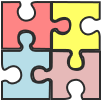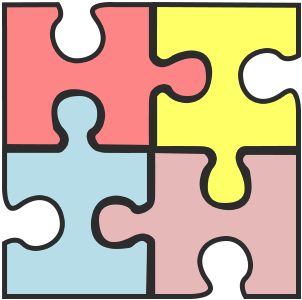The significance of understanding the “WHY”
Many parents often wonder the “why’s” of their child’s behaviors. Why is my child throwing himself on the floor and crying when I tell him that we are going to have soup for dinner? Why even after I tell them to “STOP” my children still argue with each other in the grocery store? One of the most used phrases in the field of ABA therapy is identifying the “function of a behavior”. Identifying the function of a person’s behavior is one of the most important parts of a behavior analysts’ job. For parents, caretakers, and even educators identifying why a behavior occurs is an important part of being able to determine how to respond to those behaviors. Determining the function of a behavior can lead to a desired response from those you are interacting with.
There are four reasons (known as the four Functions of Behavior) a behavior may occur:
- Attention- People, at times will engage in behaviors to gain or lose attention from others. This can look different depending on the situation or even the person they are interacting with. Engaging or removing the attention can be done in different ways. Sometimes this can be done unintentionally. An example of attention could be a child hitting her sister to get attention from her mom. Another example could be a student screaming in the classroom to gain attention from other students in the classroom.
- Access- People will engage in multiple behaviors that are motivated due to them wanting an item or activity. For example, a child will adjust their behavior if they know they will gain access to ice cream. Another example, a child takes a toy from a friend.
- Automatic- Some behaviors occur because the behavior is reinforced automatically when a person engages in that behavior. The behavior itself feels good because of this. For example, a child may have a difficult time stopping from rocking back and forth because it feels good to them.
- Escape- A person may engage in a behavior to avoid or terminate an unwanted task. Some children may run away, hide, scream, or refuse to move when given a demand they do not want to do or an item they do not want. For example, a child may scream at the dinner table because they do not want to eat the soup that is for dinner.
It can be extremely helpful for parents, caretakers, and teachers to understand how to interpret the reasons why a behavior is occurring. Understanding the functions to behaviors can help others implement strategies that can help improve skills and behaviors. Identifying the function can create significant behaviors changes for unwanted behaviors. If a child begins to scream inside of a grocery store because they do not want to be there, and the mom leaves the store because of it the child achieves what he wanted. If a person realizes they can get someone’s attention by being a “jokester”, they most likely will engage in joking with others to get their attention.
Ultimately, the goal of behavior change programs is to help improve behaviors that will result in life skills and abilities that can get them what they want. To begin the process of changing a person’s behavior we must always start by identifying and understanding the “why”. Without identifying the function of a behavior, we cannot begin to implement a behavior change program that will teach the appropriate or wanted behaviors.

